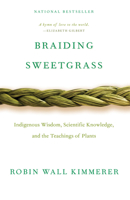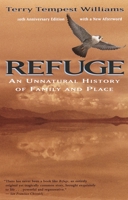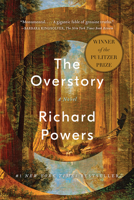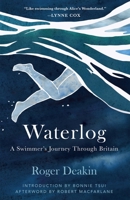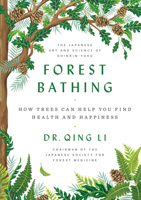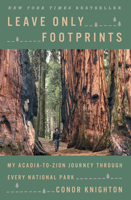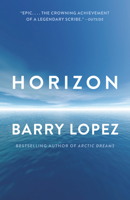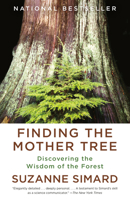Earth Love for Earth Month
15 books to help you connect with nature
By Ashly Moore Sheldon • April 21, 2024
Here in the Pacific Northwest, spring has sprung—and it is intoxicating! Petals from cherry blossoms swirl like confetti. Lush blooms burst forth on majestic rhododendron and camellia bushes. Tulips and daffodils nod in gentle breezes. Bare tree branches spring to life with tender new leaves. Sunbreaks following spring rains elicit rainbows so vibrant, we can almost believe they lead to that elusive pot of gold.
This is the time of year when we are drawn out of our houses to celebrate the natural world. In celebration of Earth Day, here are fifteen books to help reinvigorate your relationship with nature.
Braiding Sweetgrass: Indigenous Wisdom, Scientific Knowledge and the Teachings of Plants
Drawing on her life as an indigenous scientist, and as a woman, Robin Wall Kimmerer shows how other living beings in the natural world—asters and goldenrod, strawberries and squash, salamanders, algae, and sweetgrass—offer us gifts and lessons, even if we've forgotten how to hear their voices.
Refuge: An Unnatural History of Family and Place
In the spring of 1983, Terry Tempest Williams learned that her mother was dying of cancer. That same season, The Great Salt Lake rose to record heights, threatening the herons, owls, and snowy egrets that Williams, a poet and naturalist, had come to gauge her life by.
The Overstory
This Pulitzer Prize-winning novel by Richard Powers offers an impassioned paean to trees. It's a sweeping tale of activism and resistance that unfolds in concentric rings of interlocking fables ranging from antebellum New York to the late twentieth-century Timber Wars of the Pacific Northwest and beyond.
Wild: From Lost to Found on the Pacific Crest Trail
At twenty-two, Cheryl Strayed thought she had lost everything. In the wake of her mother's death, her family scattered and her marriage fell apart. Four years later, with nothing more to lose, she did something outrageous. With no experience or training, she hiked the 1,100-mile Pacific Crest Trail—alone.
Waterlog
In 1996 Roger Deakin, the late, great nature writer, set out to swim through the British Isles. He shares the fascinating perspective he gained as he made his way through all manner of waterways, including the sea, rivers and streams, lakes, lochs, ponds, moats, aqueducts, waterfalls, flooded quarries, and more.
Soil: The Story of a Black Mother's Garden
In 2013, when poet and scholar Camille T. Dungy moved to the predominantly white community of Fort Collins, Colorado, the community held strict restrictions about what residents could and could not plant in their gardens. This is the account of her seven-year odyssey to diversify her garden.
Entangled Life: How Fungi Make Our World, Change Our Minds & Shape Our Futures
When we think of fungi, we likely think of mushrooms. But mushrooms are only fruiting bodies, analogous to apples on a tree. This mind-bending book by Merlin Sheldrake introduces readers to this vast, mysterious, and massively diverse kingdom, which supports and sustains nearly all living systems.
Devotions: The Selected Poems of Mary Oliver
Throughout her celebrated career, Mary Oliver touched countless readers with her brilliantly crafted verse, expounding on her love for the natural world and the powerful bonds between all living things. This carefully curated collection of 200 plus poems showcases the beloved poet at her edifying best.
Forest Bathing: How Trees Can Help You Find Health and Happiness
The Japanese practice of shinrin-yoku, aka forest bathing, is that of spending mindful, intentional time with trees. Dr. Qing Li, the world's foremost expert in forest medicine, shows the myriad ways that forest bathing improves health, fosters happiness and creativity, and helps people live longer.
Leave Only Footprints
A broken heart left Conor Knighton needing a change of scenery. So he devised a plan that seemed drastic, even to him. Over the course of one year, he visited every national park in the country, from Acadia to Zion. His book shares delightful dispatches from what turned out to be the road trip of a lifetime.
Great Outdoors U.S.A.
From exhilarating mountain biking tails to easy day hikes and lake excursions, this beautifully illustrated book from National Geographic showcases more than 1,000 exciting escapades across the US. You can enjoy the views from the comfort of your own living room, but it will undoubtedly inspire outdoor adventures.
Horizon
Across decades of lived experience, National Book Award-winning author Barry Lopez invites readers to tag along on his world travels: from Western Oregon to the High Arctic; from the Galápagos to the Kenyan desert; from Botany Bay in Australia to finally, unforgettably, the ice shelves of Antarctica.
Prodigal Summer
Over the course of one humid summer, three intriguing protagonists face disparate predicaments but find connections to one another and to the flora and fauna living alongside them. Barbara Kingsolver's novel is a hymn to wildness that celebrates the prodigal spirit of human nature, and of nature itself.
Love Letter to the Earth
World renowned monk Thich Nhat Hanh argues for a more mindful, spiritual approach to environmental protection and activism—one that recognizes people and the planet as one and the same. Rejecting the conventional economic approach, he offers hope, mapping out the path for a spiritual revolution.
Finding the Mother Tree
A pioneer on the frontier of plant communication and intelligence, Suzanne Simard brings us into the intimate world of the trees, illuminating trees as social, cooperative creatures connected through underground networks, by which they communicate and share communal lives not that different from our own.
Renew or strengthen your connection with the natural world with these books celebrating the world around us.
Follow us on Facebook, Twitter, and Instagram for daily book recommendations, literary tidbits, and more.











